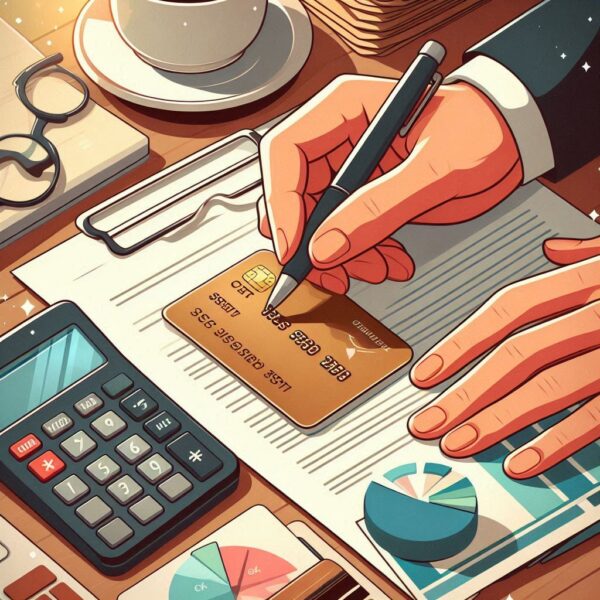Debt consolidation is all about combining multiple credit card debts into a single payment. This can simplify managing payments and might even save you money in the long run. But what exactly does it involve? Well, it’s the process of merging all your outstanding credit card balances into one loan or credit card. This way, instead of juggling several payments each month, you’re left with just one.
There are a few methods to consolidate your debt. You might go for a personal loan, a balance transfer credit card, or even a home equity loan. Each option has its own advantages and drawbacks. A personal loan can offer a fixed interest rate and a set repayment term, which helps with budgeting. A balance transfer might provide a lower interest rate initially, but watch out for those that spike after the promotional period. Home equity loans often have lower interest rates since they are secured against your home, but they also put your house at risk if you can’t make payments.
Weighing the pros and cons is essential. Consolidating can make your life easier by reducing the number of payments and potentially lowering interest rates. However, it can also come with fees and risks. For example, extending the term of your debt can mean paying more interest over time, and some consolidation loans may have steep origination fees. Consider your financial habits too. Consolidation won’t work magic if you keep spending recklessly.
The impact on your credit score is another big factor. Initially, applying for a new loan or credit card can cause a small dip in your score due to the hard inquiry. Over time, though, if consolidation helps you manage your payments better and reduces your overall debt, it might boost your score. Consistent, on-time payments on the consolidation loan can also positively affect your credit over the long haul.
Here’s a little transparency: Our website contains affiliate links. This means if you click and make a purchase, we may receive a small commission. Don’t worry, there’s no extra cost to you. It’s a simple way you can support our mission to bring you quality content.”
Contents
- 1 Steps to Consolidate Your Credit Card Debt Successfully
- 2 Interactive Budgeting & Debt-Tracking Tool
- 3 Success Story Spotlight
- 4 Long-Term Strategies for Debt Management
- 5 Expert Q&A Section
- 5.1 1. Does Consolidation Hurt My Credit Score?
- 5.2 2. Is Debt Consolidation Always a Good Idea?
- 5.3 3. Should I Close Old Credit Cards After Consolidation?
- 5.4 4. What’s the Difference Between a Debt Management Plan and a Consolidation Loan?
- 5.5 5. How Quickly Can I Become Debt-Free After Consolidation?
- 6 Common Concerns: Will I Lose My Credit Cards if I Consolidate My Debt?
Steps to Consolidate Your Credit Card Debt Successfully
First and foremost, assess your current financial situation. This means taking a good, hard look at all your debts, interest rates, and monthly payments. Don’t forget to add in your income and other monthly expenses too. Knowing where you stand financially is the first step toward making any big money decisions. Use a spreadsheet or a budgeting app to keep things organized.
Choosing the right debt consolidation method is crucial. Not all methods will work for everyone. Think about your financial goals and what makes sense for your situation. If you want a fixed repayment term, a personal loan might be the way to go. If you’re confident you can pay off the debt quickly, a balance transfer card with a low or 0% interest rate could be ideal. Always read the fine print before making a decision.
Once you’ve decided on a method, you’ll need to gather all the required documentation. Lenders and credit card companies usually ask for proof of income, lists of debts, and sometimes even tax returns. Having these documents ready can speed up the application process. Being organized is half the battle won.
Working with financial advisors and counselors can make the whole process much smoother. These experts can provide valuable guidance and support, helping you understand your options and choose the best path forward. Look for certified professionals who have your best interests in mind. Don’t hesitate to ask questions or seek a second opinion if something doesn’t seem right.
Interactive Budgeting & Debt-Tracking Tool
Enter your credit card balances, APRs, and your planned monthly payments. This tool will estimate how many months it might take to fully pay off each balance, plus show your total debt snapshot.
| Card Name | Balance ($) | APR (%) | Monthly Payment ($) |
|---|---|---|---|
Success Story Spotlight
1. Sarah’s 0% Balance Transfer Lifeline
Before: Sarah, a 28-year-old teacher, had amassed $5,000 in credit card debt across three cards, each charging around 20% interest. Struggling to make headway on any principal, she felt perpetually stuck.
Method: She applied for a balance transfer credit card offering a 0% introductory APR for 18 months. Sarah diligently moved her higher-interest balances onto this card and committed to a strict budget, focusing extra funds toward the transferred balance.
After: Within 16 months—two full months before the promo expired—Sarah eliminated all $5,000 in debt. She credits the limited-time 0% rate for helping her attack the principal aggressively and praises her new habit of tracking spending daily to avoid future credit pitfalls.
2. Miguel’s Personal Loan Turnaround
Before: Miguel found himself juggling $12,000 in credit card debt, most of it accrued during a job transition. He faced mounting fees and a sense of overwhelm with five different due dates each month.
Method: Opting for a personal consolidation loan at a fixed 9% APR, Miguel used the loan funds to pay off every card in one sweep. This left him with a single, predictable monthly payment.
After: Over 24 months, Miguel fully repaid the consolidation loan and boosted his credit score by consistently making on-time payments. With fewer monthly bills, he also allocated part of his income to build an emergency fund—ensuring he wouldn’t need to rely solely on credit in a future crisis.
Long-Term Strategies for Debt Management
Creating and sticking to a budget is a game changer for managing debt effectively. Start by tracking all your income and expenses to see where your money is going. Allocate money for necessities first, then set limits on non-essential spending. Use budgeting apps or simple spreadsheets—whatever works best for you.
Exploring additional income sources can also help you pay down your debt quicker. This might mean taking on a side hustle, freelancing, or even selling items you no longer need. The extra cash can significantly reduce your debt more quickly, and every little bit counts.
Understanding and managing your spending habits is vital. Identify triggers that lead to overspending and find ways to avoid them. Maybe it’s dining out too often or impulsive online shopping. You might need to set new rules for yourself, like waiting 24 hours before making any non-essential purchases.
Utilizing financial tools and apps makes tracking expenses easier. Many apps can link directly to your bank accounts and credit cards, giving you real-time updates on your spending. Use these tools to set financial goals and create alerts to notify you when you’re close to hitting your spending limits.
Expert Q&A Section
1. Does Consolidation Hurt My Credit Score?
Answer (National Foundation for Credit Counseling):
“Applying for a new loan or credit card results in a hard inquiry on your credit, which can cause a small drop in your score. Over time, however, successful consolidation can improve your credit if it helps you make on-time payments and lower your total credit utilization.”
2. Is Debt Consolidation Always a Good Idea?
Answer (Consumer Financial Protection Bureau):
“Not necessarily. It works best for individuals who have high-interest credit card debt but can qualify for a consolidation option with a substantially lower APR. If underlying spending habits remain unchanged, consolidation may only provide temporary relief.”
3. Should I Close Old Credit Cards After Consolidation?
Answer (NFCC-Certified Credit Counselor):
“Closing old cards might reduce the temptation to spend, but it can also lower your overall available credit, potentially raising your utilization ratio. Keep at least one or two lines open to maintain a healthy credit history—just avoid racking up new balances on them.”
4. What’s the Difference Between a Debt Management Plan and a Consolidation Loan?
Answer (Financial Coach, Money Management International):
“A debt management plan is a structured program run by a credit counseling agency that negotiates lower interest rates with creditors. You’ll make one monthly payment to the agency, which distributes funds to your creditors. A consolidation loan involves taking out a new loan to pay off existing debts, leaving you with a single creditor (your loan provider). Both reduce multiple payments to one, but they differ in who you pay and how interest rates are determined.”
5. How Quickly Can I Become Debt-Free After Consolidation?
Answer (Certified Financial Planner):
“Timelines vary widely based on your debt amount, interest rates, and repayment discipline. Some clients resolve mid-sized debts in under two years with an aggressive plan, whereas larger sums or higher interest rates could take three to five years—or more. The key is consistent, above-minimum payments.”
Common Concerns: Will I Lose My Credit Cards if I Consolidate My Debt?
During debt consolidation, the fate of your existing credit cards largely depends on the method you choose. For instance, if you’re using a balance transfer, you might keep your old cards open but with zero balances. On the other hand, a personal loan doesn’t require you to close your credit card accounts once you’ve paid off the balances.
A common worry is how consolidation impacts your credit card accounts and limits. An open but inactive credit card can positively affect your credit utilization ratio—the amount of credit you’re using compared to your available credit. Lower utilization can boost your credit score. However, credit card issuers might close inactive accounts, so monitor them regularly to avoid unexpected closures.
Managing existing credit card accounts responsibly post-consolidation is crucial. Resist the urge to run up new balances on those cards. If your spending habits don’t change, you might end up in a worse financial situation. Some financial advisors recommend keeping a card for emergencies and cutting up the rest if temptation is too strong.
Expert advice on maintaining financial health after consolidation often includes building an emergency fund and monitoring your credit report. An emergency fund acts as a financial cushion, reducing the need to rely on credit cards for unexpected expenses. Regularly checking your credit report helps ensure there are no errors and allows you to track your progress.

